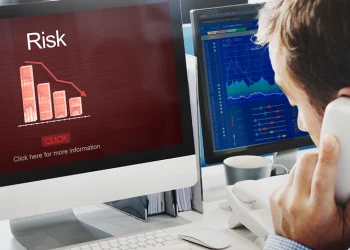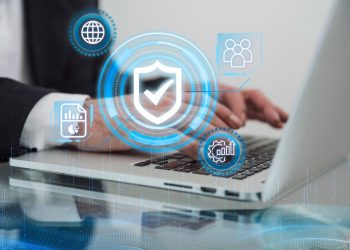Organizing a conference is one of the most dynamic and impactful ways to share knowledge, foster networking, and build professional communities. Whether it’s an academic gathering, corporate summit, or industry expo, a well-executed conference can elevate your brand, strengthen relationships, and generate significant business or research outcomes. To make your event truly successful, it’s essential to master the art of planning, logistics, audience engagement, and post-event strategy.
Understanding the Purpose of a Conference
Before diving into logistics, define the why behind your event. A conference isn’t just about gathering people in one space; it’s about creating a structured experience that educates, inspires, and connects.
Types of Conferences
Different objectives call for different formats. Common types include:
- Academic Conferences – Focused on sharing research, presenting papers, and advancing academic collaboration.
- Corporate Conferences – Used for internal communication, strategy discussions, or stakeholder engagement.
- Industry or Trade Conferences – Offer networking opportunities, product showcases, and insights from leaders in a specific field.
- Hybrid and Virtual Conferences – Combine physical attendance with digital participation for global accessibility.
By clarifying your goals early, you can determine the ideal audience, speakers, content themes, and budget allocation.
Planning and Strategy Development
The foundation of every great conference lies in its planning. Without a structured roadmap, even the best ideas can fail to take off.
Establishing Clear Objectives
Start by defining measurable outcomes. For example:
- Increase industry collaboration by 30% through networking sessions.
- Generate 1,000 qualified leads for participating businesses.
- Publish a post-conference whitepaper summarizing key findings.
Specific goals not only keep the organizing team focused but also help in measuring success once the event concludes.
Setting the Budget
Budgeting isn’t just about controlling expenses; it’s about strategic resource distribution. Consider the major cost areas:
- Venue and technology setup
- Speaker fees and travel costs
- Marketing and promotion
- Catering and hospitality
- Printing, signage, and decor
- Virtual platform subscriptions (for hybrid or online conferences)
Always allocate at least 10% of your total budget for unforeseen expenses. This buffer ensures flexibility without compromising quality.
Choosing the Right Venue
Your venue sets the tone for the entire event. The ideal conference space should balance capacity, accessibility, and technology infrastructure.
Key Venue Selection Criteria
- Location: Choose a venue that’s easy to reach via public transport or near major airports.
- Facilities: Ensure high-quality audiovisual systems, sufficient seating, and reliable Wi-Fi connectivity.
- Ambiance: The design and atmosphere should align with the conference theme.
- Accessibility: Ensure ADA compliance and easy navigation for attendees with special needs.
- Accommodation: Prefer venues with nearby hotels or on-site lodging options.
When possible, conduct a site visit before confirming the location to verify capacity, lighting, sound quality, and staff professionalism.
Designing an Engaging Agenda
A conference’s value depends on the quality of its content and structure. Attendees should leave with actionable insights and meaningful experiences.
Building a Strong Program
Your agenda should balance keynotes, panels, workshops, and networking breaks. For example:
- Start with an inspiring keynote address to set the tone.
- Follow with interactive sessions or roundtables for engagement.
- Schedule short breaks to maintain energy levels.
- End with a closing ceremony summarizing takeaways.
Integrating hands-on sessions like case studies or live demos adds depth and interactivity.
Selecting Speakers and Moderators
Great speakers attract audiences. Choose individuals with proven expertise, engaging presentation skills, and fresh perspectives. To diversify content, mix well-known industry leaders with rising professionals.
Provide clear briefing materials and pre-event orientation for speakers to ensure consistency in tone and messaging.
Marketing Your Conference
Even the most meticulously planned conference can fail without effective marketing. The objective is to build anticipation, drive registrations, and sustain engagement before, during, and after the event.
Effective Promotion Strategies
- Early-bird discounts: Encourage early sign-ups with special pricing.
- Email marketing: Send personalized invitations and regular updates.
- Social media campaigns: Use LinkedIn and Twitter for professional outreach.
- Press releases: Announce key speakers, topics, or innovations to attract media coverage.
- Partnerships: Collaborate with professional associations and institutions to expand your reach.
Maintain consistent branding across all materials, from registration pages to social posts.
Leveraging Technology for a Seamless Experience
Modern conferences rely heavily on technology to enhance both onsite and virtual experiences.
Key Technological Integrations
- Event Apps: Offer schedules, maps, speaker bios, and live updates.
- QR Codes: Simplify check-ins, session access, and feedback collection.
- AI-driven Tools: Match attendees for networking and recommend sessions based on interests.
- Live Streaming: Expand audience reach beyond geographical limits.
- Data Analytics: Measure engagement levels, attendance rates, and session popularity.
Incorporating technology creates a smooth, connected experience that improves attendee satisfaction.
Ensuring Audience Engagement
Engagement is the lifeblood of a successful conference. Passive listening has evolved into interactive participation.
Proven Engagement Techniques
- Interactive Q&A sessions: Encourage live discussions with experts.
- Polling and gamification: Use digital tools to make sessions fun and participatory.
- Networking lounges: Facilitate meaningful one-on-one connections.
- Post-event communities: Create LinkedIn or Slack groups for ongoing collaboration.
Attendees remember experiences that make them feel included, valued, and intellectually stimulated.
Managing Logistics and Onsite Operations
Behind the scenes, operational excellence determines the conference’s overall experience.
Key Operational Tasks
- Coordinate arrival schedules for speakers and guests.
- Set up registration counters with trained volunteers.
- Test AV equipment thoroughly before each session.
- Ensure catering is timely and dietary needs are met.
- Keep signage clear and directional.
- Maintain an emergency plan for technical or health issues.
A detailed run-of-show document outlining every session and task is essential for seamless execution.
Post-Conference Follow-Up and Evaluation
A conference doesn’t end when the lights go out. The follow-up phase determines long-term impact and return on investment.
Effective Post-Event Strategies
- Send thank-you emails to speakers, sponsors, and attendees.
- Distribute post-event surveys to collect feedback and testimonials.
- Publish recorded sessions or highlights for on-demand access.
- Analyze data to assess attendance trends and engagement levels.
- Plan next year’s improvements based on insights and feedback.
A thoughtful follow-up not only enhances reputation but also nurtures long-term relationships.
Sustainability in Conferences
In the modern world, sustainability has become a defining factor of responsible event planning.
Environmentally Conscious Practices
- Opt for digital tickets and programs to reduce paper waste.
- Source local food vendors to minimize carbon footprint.
- Use recyclable materials for signage and decor.
- Encourage public transport or shuttle services for attendees.
Eco-conscious planning not only supports environmental goals but also appeals to a socially aware audience.
Common Mistakes to Avoid
Even experienced organizers can stumble if they overlook crucial details. Avoid these pitfalls:
- Ignoring attendee feedback from previous events.
- Overloading the agenda with too many sessions.
- Neglecting to test technology before the event.
- Failing to promote adequately in the months leading up to the event.
- Forgetting to measure ROI and key performance metrics.
Meticulous preparation and adaptability are the cornerstones of a flawless experience.
Real-Life FAQ
What is the ideal lead time to plan a conference?
Typically, 6–12 months is optimal. Large international conferences may require 18 months for securing venues, speakers, and sponsorships.
How can I increase attendee engagement during long sessions?
Incorporate short energizing activities, live polls, or Q&A breaks every 30–45 minutes to maintain interest.
What’s the best way to attract sponsors?
Offer customized sponsorship packages highlighting visibility opportunities—logo placements, speaking slots, or branded networking areas.
Should small organizations host conferences?
Absolutely. Even smaller-scale conferences can drive growth, build community, and position your brand as a thought leader.
How do I measure the success of a conference?
Analyze attendance numbers, engagement data, social media mentions, lead generation, and participant feedback to gauge performance.
A well-orchestrated conference blends strategic planning, technology, and human connection. Whether your goal is to inspire innovation, share knowledge, or strengthen networks, each element—from pre-event preparation to post-event engagement—shapes the overall success. When done right, a conference isn’t just an event; it becomes a transformative experience that leaves a lasting impact on every participant.



















